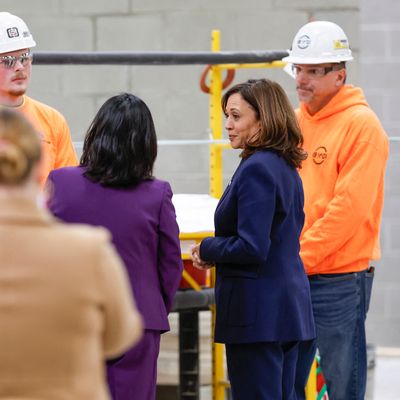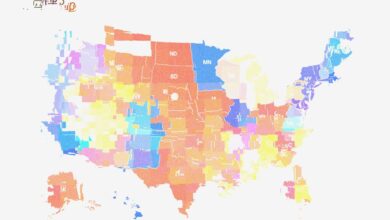

Photo: Kamil Krzacynski/AFP/Getty Images
Whoever wins the presidency will be inheriting an unaffordable housing market with no easy way to fix it. Years of high interest rates have made it difficult for buyers to afford a new home, while sellers are reluctant to give up lower monthly payments they locked in from an era of cheaper money. Anyone who’s taken a casual look at Zillow this past home-buying season knows the market is so barren of homes for sale that even unremarkable hovels are going for luxury pricing. (It’s getting so bad that, according to The Wall Street Journal, nearly one in ten cost more than $1 million — about double the rate just five years ago). Even when there’s unabashedly good news, like in the planned 7,000 units announced this week for the East Bronx, there’s a catch: These units have been in discussion since 2018 and will take at least another three years before they’re available. The impact of this yawning unaffordability is generational and lopsided — a recent spike in the generational wealth of millennials favors those who owned property, especially those who bought before the pandemic and saw the value of their homes skyrocket.
On Friday, Kamala Harris proposed a fix for the market by using a carrot-and-stick approach that would, essentially, tilt the housing market toward younger buyers with the least amount of money. The headline of the proposal is that she wants to build 3 million new homes by 2029, about 50 percent more than Joe Biden had promised. This would be spurred by $25,000 in tax credits for first-time buyers to help with down payments, plus tax credits for builders who make affordable homes.
It’s geared toward the masses of wannabe first-time buyers who seemingly have no place to go, rather than large Wall Street investors who have the capital and resources to buy up swaths of apartments and act as landlords. Home-builder companies like Toll Brothers and Pulte Group saw their stock go up on Friday, as did Zillow, and the plan has so far gotten pretty good reviews from economists.
Harris’s plan borrows some of Trump’s ideas, such as tax cuts and incentives for first-time buyers. Otherwise, his plans are either vague (cutting inflation and stopping immigration), unlikely to work (opening up federal lands — a long and expensive process — for building), or of the futuristic variety that a Saudi prince might envision (and then downsize).
What’s more interesting are the disincentives — that is, the stick. These are plans that could actually bring prices lower and do so more immediately. Harris plans to cut out tax breaks for large Wall Street firms, like BlackRock and Blackstone, which have bought up large swaths of apartments and homes throughout the country. The details of this are spotty, but if it becomes less profitable for large firms to buy and hold homes, the market would start to adjust by putting more of those properties on the market. There is also a plan to end the already-controversial practice of algorithmic price-setting for landlords. To an extent, this is just a continuation of the Biden era, since the FBI raided a large corporate landlord in June, over apparent rent price-fixing. Since shelter costs, including rent, continue to be the single biggest drag on getting inflation to come down, this could do more to help affordability not just for homeowners, but also for renters.
The housing market is liable to start changing this September. The Federal Reserve is just a month away from likely lowering interest rates for the first time since 2020, and mortgages have already become more affordable. But how those lower rates affects home prices remains to be seen — it’s just as likely that more buyers will come to market, pushing home costs skyward. There’s still a lot to be determined about how Harris’s plans would work — not the least of which is how she intends to get homes built in California or New York, where zoning rules are tight. But even if she pulls that off, it’s unlikely all that building would change too much nationally — last year, just over 4 million homes were sold, the lowest number since 1995, while prices rose 1 percent, the highest increase ever. What Harris needs to do is spur more people to sell, and that is not only out of her hands but where the real risk is — especially if too many people want to sell at once or the economy implodes out of nowhere. To truly make housing affordable is going to mean walking a fine line between cooling a hot market and crashing it.




